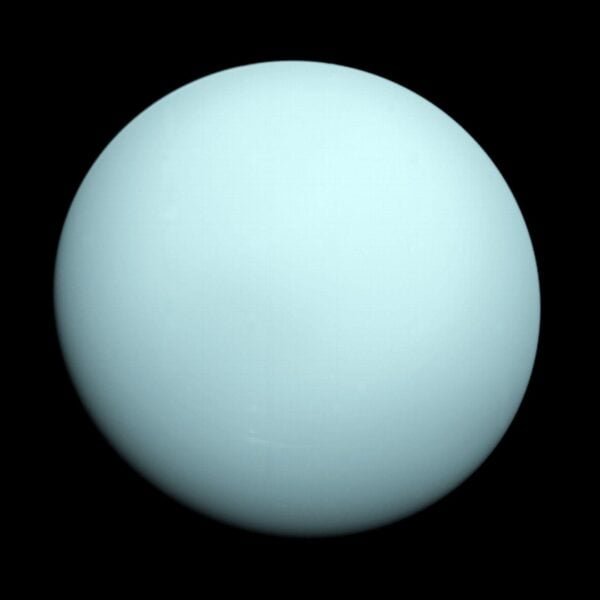Summary: Scientists analyzing decades-old data from NASA’s Voyager 2 mission have discovered that the spacecraft observed Uranus’s magnetic field in an unusual state that occurs less than 5% of the time. This finding, published in Nature Astronomy, suggests that many of our long-held assumptions about the planet’s magnetosphere may need to be reconsidered.
Journal: Nature Astronomy, 2024, DOI: 10.1038/s41550-024-02248-1 | Reading time: 4 minutes
A Cosmic Coincidence
When NASA’s Voyager 2 spacecraft made its historic flyby of Uranus in 1986, it provided scientists with their first – and so far only – close look at this mysterious ice giant. However, new research reveals that the timing of this encounter may have given us a skewed picture of the planet’s magnetic environment.
“If Voyager 2 had arrived just a few days earlier, it would have observed a completely different magnetosphere at Uranus,” says Jamie Jasinski, lead author of the new study. “The spacecraft saw Uranus in conditions that only occur about 4% of the time.”
Understanding the Difference
The research team discovered that just before Voyager 2’s arrival, Uranus had been affected by an unusual space weather event that compressed the planet’s magnetic field. This compression dramatically changed the shape and behavior of the magnetosphere – the protective magnetic bubble surrounding the planet.
The data showed that if the spacecraft had arrived a week earlier, it would have encountered the magnetic boundary much farther from the planet, at about 28 planetary radii instead of 17. This difference represents a substantial change in the magnetosphere’s size and behavior.
Implications for Future Research
This finding has significant implications for our understanding of Uranus. Many of the unusual features observed during the flyby – such as the intense radiation belts and the apparent lack of plasma – may have been temporary conditions rather than permanent characteristics of the planet.
The research also holds important implications for future missions to Uranus. Scientists planning these missions will need to account for the variable nature of the planet’s magnetic environment, particularly when studying the potential subsurface oceans of Uranus’s moons.
Glossary:
- Magnetosphere: A planet’s protective magnetic bubble that shields it from solar wind
- Solar wind: Stream of charged particles flowing from the Sun
- Plasma: Electrically charged gas
- Radiation belts: Regions of trapped energetic particles within a magnetosphere
Quiz:
- How often do the magnetic field conditions observed by Voyager 2 typically occur?
Answer: About 4% of the time - What caused the unusual state of Uranus’s magnetic field during the flyby?
Answer: An unusual space weather event that compressed the planet’s magnetic field - How much closer to the planet was the magnetic boundary during the flyby compared to normal conditions?
Answer: It was at 17 planetary radii instead of 28 - What year did Voyager 2 conduct its Uranus flyby?
Answer: 1986
Enjoy this story? Get our newsletter! https://scienceblog.substack.com/
If our reporting has informed or inspired you, please consider making a donation. Every contribution, no matter the size, empowers us to continue delivering accurate, engaging, and trustworthy science and medical news. Independent journalism requires time, effort, and resources—your support ensures we can keep uncovering the stories that matter most to you.
Join us in making knowledge accessible and impactful. Thank you for standing with us!

